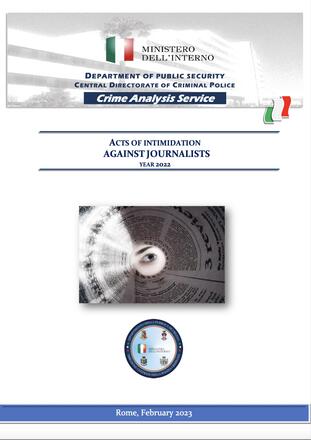
The report was produced by the Department of Public Security under the Ministry of Interior and focuses on intimidations suffered by journalists in 2022 in Italy. The report compares the trend across two years: 2022 and 2021 data.
In 2022, 111 cases of intimidation against journalists have been reported. The number decreased by 52% compared to 2021. In 2021, the sources of intimidation were mainly originated from social political contexts (49% of recorded episodes). In 2022, this trend went almost unaltered, 48% of the registered cases echoing sociopolitical motives. These acts of intimidation have been targeting more men than women (74-to-28 ratio in 2022 and 161-to-57 ratio in 2021). Online intimidation has emerged as the main modus operandi throughout both years (27% in 2022 and 44% in 2021). Facebook and Instagram emerged as harassers’ preferred social networks.
The study georeferenced intimidation acts across the entire Italian territory. Latium and Lombardy, both in 2021 and in 2022 registered the highest number of intimidations to journalists. In 2021, 232 acts of intimidation were committed in Italy: 62% of them took place in Latium, Lombardy, Tuscany, Sicily and Emilia-Romagna. The provinces of Rome, Milan, and Florence registered the highest number of episodes. High-risk physical aggressions, verbal threats and online threats impacted Latium more than any other Italian region. However, high-risk damages interested primarily Sicily, Calabria and Marche. In 2022, almost 70% of 111 threats to journalists’ safety happened in Latium, Lombardy, Campania, Calabria and Sicily. The provinces of Rome, Milan, Naples, and Bari registered the highest number of episodes. Most of the online threats took place in Latium, confirming the precious year trend. The region hit by the highest number of physical attacks on journalists was Lombardy. The study reported that in 2022, 20 intimidating episodes were related to COVID-19, registering a decrease compared to the previous year, when 53 cases were observed.
Tags: Italy Safety of journalistsThe content of this article can be used according to the terms of Creative Commons: Attribution-NonCommercial 4.0 International (CC BY-NC 4.0) . To do so use the the wording "this article was originally published on the Resource Centre on Media Freedom in Europe" including a direct active link to the original article page.

